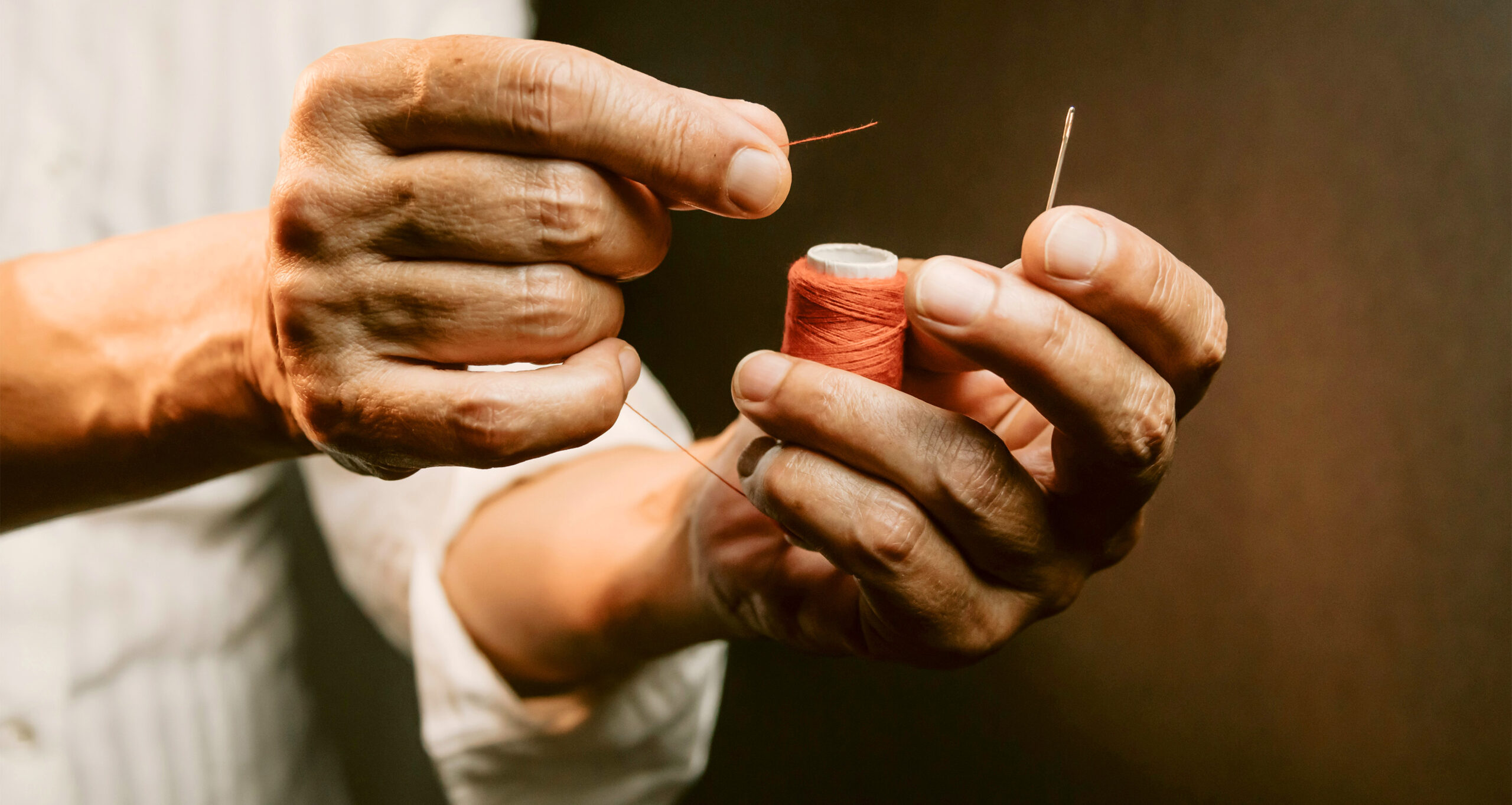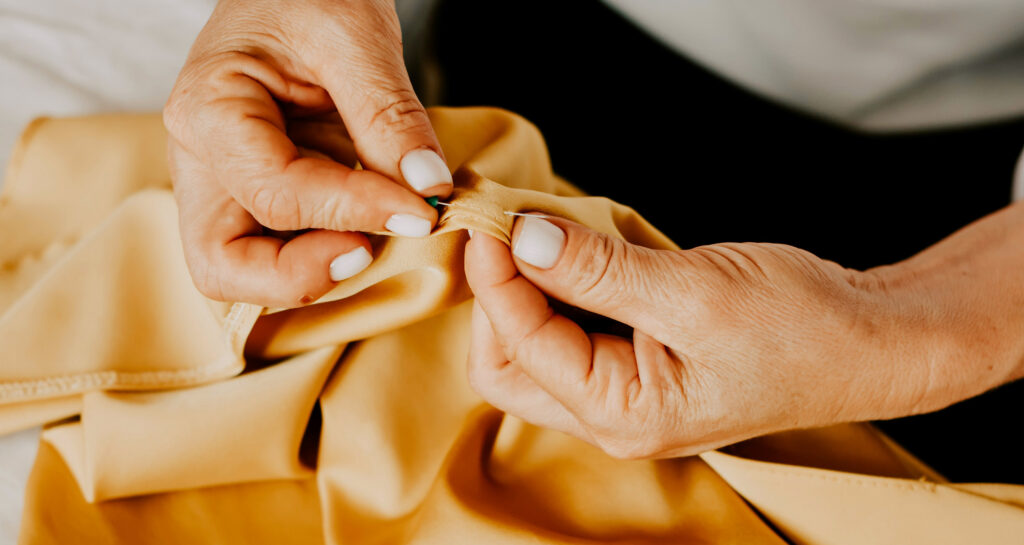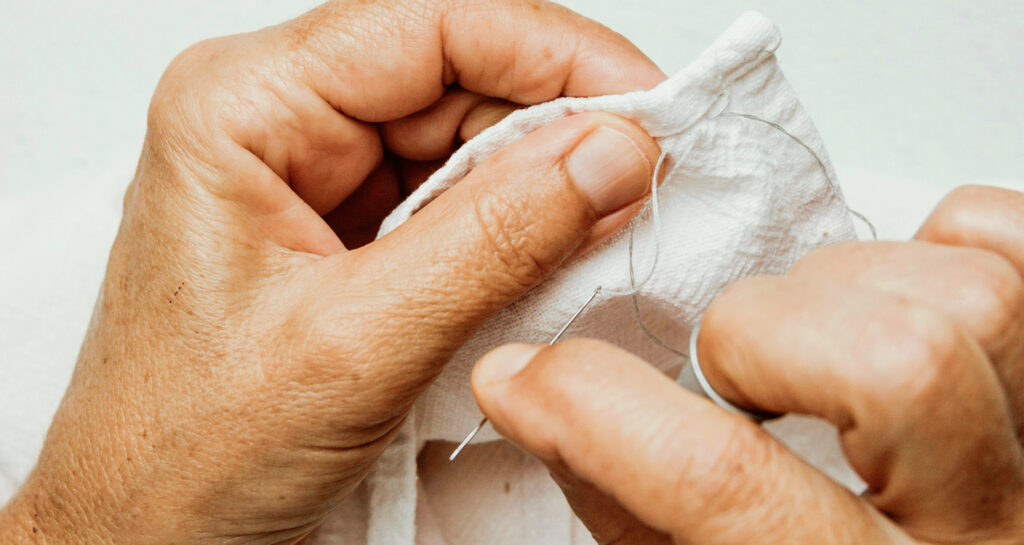4 Basic Sewing Skills Everyone Needs
Published on February 16, 2025

Sewing isn’t just for grandma – it’s a life skill that can save you time, money, and a trip to the tailor. With just a few basics your needle-and-thread mastery can mean a total game-changer for everyday life.
A popped button? You can fix that. A favorite pair of jeans starting to fray? No problem. Whether you want to extend the life of your wardrobe, add a personal touch to home decor, or simply feel more self-sufficient, these four sewing skills are absolute must-knows.
Hand Stitching Basics – you can do it!
Whether you’re doing a quick fix or working on a creative project, knowing the basic stitches is key.
- Running Stitch: The classic in-and-out stitch. Perfect for quick fixes and gathering fabric. Watch it done here.
- Backstitch: A step forward, a step back – this stitch is stronger than the running stitch and ideal for seams. Watch it done here.
- Blind Hem Stitch: Great for hemming pants or skirts invisibly. Fold the hem inside, take tiny stitches through the fabric without going all the way through, and secure it in place. Watch it done here.

Sewing on a button – because buttons have a mind of their own
Why? Buttons inevitably fall off, and knowing how to reattach them saves time and prevents the need for replacements.
When? Whenever a button falls off shirts, jackets, or pants – or when you want to replace standard buttons with something more stylish.
How?
- Thread a needle with strong thread and tie a knot at the end.
- Insert the needle from the inside of the fabric, pulling it through one buttonhole.
- Sew through the opposite hole, looping back and forth several times.
- Wrap the thread around the base of the button for extra security, then tie a knot and cut the excess thread.

Mending a Small Tear or Hole – your clothes deserve a second chance
Why? Tears in clothes or fabric items don’t have to mean the end of their use. Quick mending extends their life.
When? When a seam rips or small holes appear in favorite clothes, pillowcases, bags, and more.
How?
- Turn the fabric inside out and align the torn edges.
- Use a blind stitch or backstitch to sew the edges together tightly.
- Secure with a knot and trim excess thread.
- For extra reinforcement, use an iron-on patch or fabric glue if needed.

Hemming Pants or Skirts – because tailoring is expensive
Why? Customizing the length of clothing ensures a better fit and saves money on professional alterations.
When? When pants, skirts, or dresses are too long – or when an old hem unravels.
How?
- Measure and mark the new hemline you want with chalk or pins.
- Fold the fabric up evenly where you want the new hem and press with an iron to hold the shape as a guide.
- Use a needle and thread to sew a backstich or blind stitch all along the hem.
- Press again to set the new hem in place.

Securing a Seam – save the day when fabric frays
Why? Loose seams can quickly lead to bigger problems, but a simple backstitch can keep them in check.
When? When the stitching in a seam starts to come undone, like in the armpit of a shirt or along a skirt’s side.
How?
- Align the seam so the edges match up evenly
- Use a backstitch to secure the fabric, making sure to overlap the existing stitches slightly
- Tie off the thread, trim any excess, and test the new reinforced seam strength
Final Thoughts
With these four sewing skills, you’ll be prepared to handle common wardrobe mishaps, personalize your clothing, and make simple repairs at home.
Also, take advantage of the countless sewing tutorials available online so you can master any project one stitch at a time. A little sewing knowledge can go a long way in keeping your wardrobe functional and fresh!



